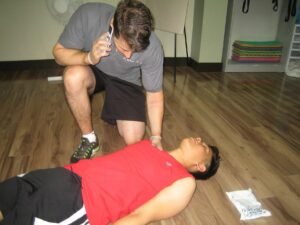In order to become an efficient EMT or rescuer, choosing training centers that tackle the vital points of CPR such as St Mark James Training center is a must. These vital points ensure that the CPR technique that will be performed on the patient does more harm than good depending on the patient’s current medical condition and diagnosed cardiovascular disease. Here are the vital points about CPR that are discussed in efficient CPR and first aid training centers.
Ensure Safety of the Patient and Rescuer

Stressful events such as earthquakes and fire can trigger a heart attack or stroke depending on the patient’s overall health and the severity of his or her cardiovascular disease. When this happens, the first point that rescuers should consider is safety. Should the patient be moved somewhere else before administering CPR? Would moving the patient to a safer location be less beneficial or cause further injuries? These are some of the questions that rescuers should answer first.
Check the Patient’s Consciousness Level
To an ordinary person, a patient can only be either awake or asleep. To an EMT or a healthcare professional, there are several levels of consciousness which affects the way that CPR is delivered to a patient. These levels include full alertness, cloudy consciousness, confused state, lethargy, obtunded state, stupor and coma. Assessing the consciousness level of the patient also ensures that the rescuer can obtain a consent from the patient before performing any CPR techniques which can prevent future lawsuits that may be filed against the rescuer.
Determine if the Patient is Breathing
It is the responsibility of every healthcare provider to check a patient’s ABC’s before administering any type of care. These ABC’s refer to the patient’s airway, breathing and circulation status. If the patient is having trouble breathing, rescuers should search for any obstruction in the air passageway. If there is not breathing or is breathing very shallowly, the rescuer should immediately ask for assistance from bystanders or other rescuers to proceed with ventilation.
Assess the Patient’s Pulse
This is what many training centers neglect to tell their trainees. Chest compressions are mostly done on patients without a pulse. Training center such as the St Mark James Training center teach rescuers how to properly locate the carotid artery and check for the pulse. This ensures that the CPR technique that will be applied to the patient will not cause any form of shock or intensive damage to the circulatory system.
